![]()
![]()
![]()
Use LEFT and RIGHT arrow keys to navigate between flashcards;
Use UP and DOWN arrow keys to flip the card;
H to show hint;
A reads text to speech;
17 Cards in this Set
- Front
- Back
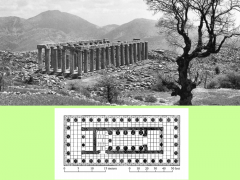
|
Temple of Apollo, Bassae, c. 430-390 BC Oddball temple Completely out in the middle of nowhere, in the mountains where no one would ever go to for any other reason Structure is unusual - built of local stone, - two attached rows of Ionic columns and in the back there is a single Corinthian column Oldest surviving example of a Corinthian column |
|
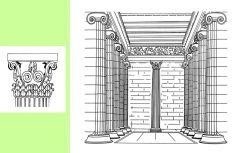
|
Interior, Temple of Apollo, Bassae, c. 430-390 BC Shows Corinthian columns and weird attached columns A space behind the Corinthian column accessed by a side door - and most Greek temples were oriented east to west, but this one is oriented North to South |
|
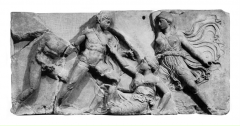
|
Temple of Apollo, frieze, c. 400-390 BC Greeks, Amazons, Lapiths, Centaurs etc More dramatic than the Parthenon frieze, maybe a little over dramatic Wet drapery style |
|
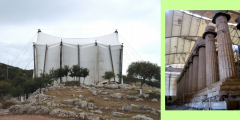
|
Temple of Apollo, Bassae, c. 430-390 BC - as it is today |
|
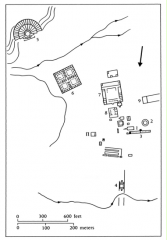
|
Sanctuary of Asklepios at Epidauros Religious sanctuary, the entire site is religious in nature and the temple is a complex with mini buildings Greek god of healing and medicine Healing cult became popular in the 4th century BC People came to get healed Important buildings include the temple itself (doric, early 4th c bc) A long stoa where sick pilgrims slept to be cured Tholos or round building |
|
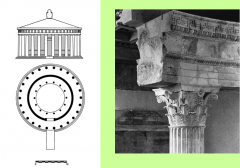
|
Tholos, Epidauros, c. 360-340 BC Structure consists of 3 concentric circles Doric Columns, Corinthian columns (Corinthian extremely popular from here on out) They think it had some kind of religious purpose |
|
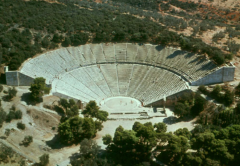
|
Theatre, at Epidayuros, early 3rd c. BC Typical Greek theatre form |
|
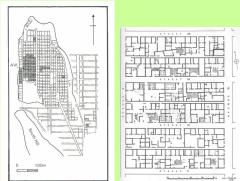
|
Olynthos Shows signs of occupation that go all the way back to the Neolithic At its height in the 5th and 4th century BC After being destroyed by the Persians it was rebuilt and then attack and destroyed again by Phillip Used by Phillip for a while and then abandoned and so we have a snapshot of domestic architecture Even has household artifacts left Stone foundations, mud brick upper parts |
|
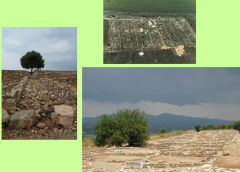
|
Olynthos Today |
|
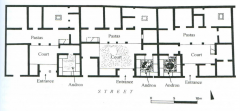
|
Layout of Houses, Olynthos Corridor often referred to as a pastas or veranda, and so often called pastas type houses. The key characteristic of houses in this time period Andron meaning the room for men, male members of the household had the fanciest room, had mosaic floor, for receiving and entertaining other male guests Greek women led fairly secluded lives |
|
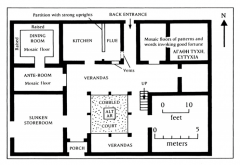
|
Villa of Good Fortune, Olynthos, 4th c. BC Central court area, pastas, storage areas, etc A specific house from Olynthos One of the nicer houses Earliest type of Greek mosaics |
|
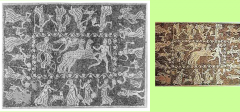
|
Mosaic from Villa of Good Fortune, Olynthos, 4th c. BC Showing a man pulling horses, a pebble mosaic First appeared late in the 5th c. BC These mosaics were made from pebbles, so the artist collected the different colors, sorted them by colors and used them to create this image |
|
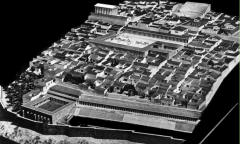
|
Priene This area was the center of the Greek world Greek city in Asia Minor Small place, not important in antiquity but well preserved and not built over Set on a steep bluff over a river |
|
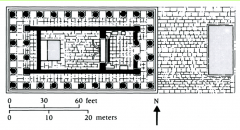
|
Temple of Athena at Priene Late classical Ionic temple Dedicated to Athena polias Constructed in mid 4th C BC and Alexander paid for it in return for being allowed to officially dedicate it Architect was Pithios who said doric order was too hard, so he created a new Ionic canon - a new set of ideal proportions for Ionic temples |
|
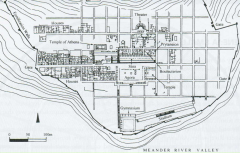
|
Close up of Downtown Priene |
|
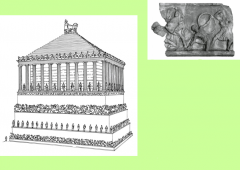
|
Mausoleum (Tomb of King Mausolos) Halikarnassos, c. 350 BC Seven wonder of the ancient world Not much survives - we know most things from literature Artemisia his wife erected the tomb for the local ruler in Asia Minor This place is not actually a Greek city, it was in the region of Caria which was ruled by Persians - but Greek names of sculptors Shows Greeks fighting amazons Mix of cultural influences, shows the draw of Greek art and iconography even on non-Greeks |
|
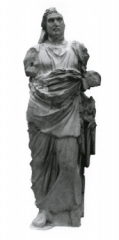
|
Mausoleum (Tomb of King Mausolos) Halikarnassos, c. 350 BC - Statue of a Man In Greek style - male in heavy drapery unusual Small beard and a mustache meaning he is not Greek Face and hair have the physical traits of someone from non-Greek areas |

